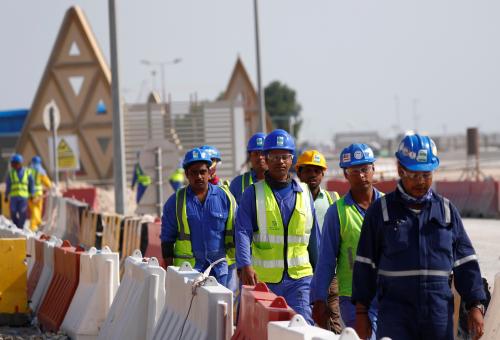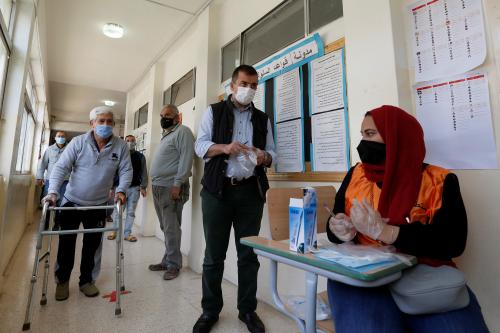Content from the Brookings Doha Center is now archived. In September 2021, after 14 years of impactful partnership, Brookings and the Brookings Doha Center announced that they were ending their affiliation. The Brookings Doha Center is now the Middle East Council on Global Affairs, a separate public policy institution based in Qatar.
The following are contributions by Brookings Doha Center experts Salman Shaikh and Shadi Hamid to After Mubarak, What’s Next for Egypt? in which the Washington Post asked seven experts to discuss what should happen in Egypt after Mubarak’s regime comes to an end.
“After Mubarak” by Shadi Hamid:
“Transition” has become one of the most misused and misunderstood words in the American political lexicon. No one seems exactly sure what it means. What we do know, though, is that democratic transitions are notoriously messy affairs. Both sides make compromises. And it always seems like the good side – the pro-democracy one – makes more.
The playbook goes something like this: Facing popular pressure, ruling elites realize they have to make concessions. Opposition elites enter into negotiations and, based on each side’s relative strength and momentum, as well as international pressure, the slow, difficult work begins.
In Egypt, an interim “national unity government,” representing the full range of parties (including the Muslim Brotherhood and reform-minded ruling-party officials), should be established, with the military acting as guardian. It would oversee the drafting of a new constitution that restrains the power of the executive branch. (Egyptians should consider whether it’s time to shift to a parliamentary system.) There should be six months of free, unfettered political participation so that secular parties – which are extremely weak in Egypt – are able to build organizational infrastructure, gain members and get their message out. Then, if we’re lucky, Egypt holds its first free elections in more than six decades.
The international factor may prove decisive in ensuring the parties stick with the road map. Fortunately, the United States has $1.5 billion in annual assistance to use as leverage. It should also consider significantly increasing aid to ensure the new governments meet key benchmarks on democratization.
“After Mubarak” by Salman Shaikh:
With one president down in the Arab region and another in jeopardy, people wonder which regime is next to go? But focusing on the headcount may miss the point.
Some Arab leaders have responded to the demands mounting on them. Over the past week alone, Abdelaziz Bouteflika of Algeria has offered to end 19 years of emergency rule; Yemeni President Ali Abdullah Saleh announced that he would step down in 2013; and Syria’s Bashar al-Assad promised long-stalled political reforms. In each case, it may not be enough. Regardless, their regimes are being forced to make changes that may ultimately affect the nature of their rule.
It is clear that the Arab region has already moved to a new era. The implications for U.S. policymakers are going to be profound.
President Obama got it right in Cairo in June 2009 when he observed that governments that protected human rights “were ultimately more stable, successful and secure.” The question that remains is: Why does the United States support societies in the Arab region that are the opposite of its own?
Washington has another opportunity to alter its behavior and support the region’s largely unchartered transition to a democratic future. In doing so, it would start a real, productive dialogue with many peoples that previously hasn’t existed.



Commentary
Op-edAfter Mubarak, What’s Next for Egypt?
February 4, 2011